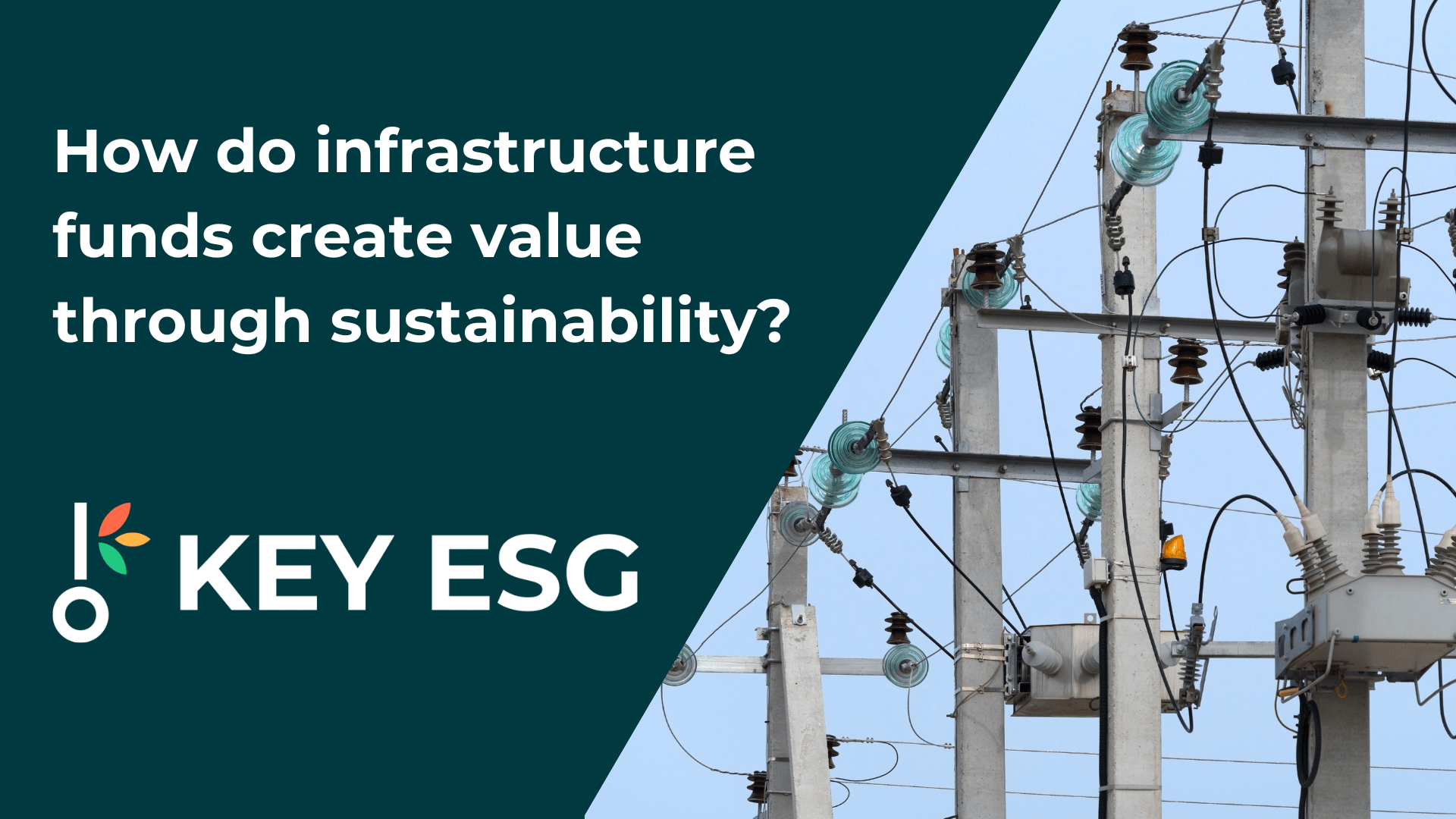How infrastructure investors use sustainability to drive returns
Infrastructure investors are increasingly using sustainability data, AI-powered reporting, and asset-level analysis to enhance returns and manage risk. As regulations tighten and investors demand credible impact, the ability to capture, verify and act on sustainability performance data has become a competitive advantage.
1. Why infrastructure is a natural fit for sustainability value creation
Infrastructure funds own and operate physical assets – energy networks, transport systems, digital infrastructure and utilities – where sustainability directly affects operational costs and resilience. Because they hold assets for long periods, managers can invest in efficiency upgrades, renewable energy, safety and community engagement that reduce risk and improve value over time.
2. Turning sustainability data into investment intelligence
Leading investors are moving from compliance to performance. Granular, site-level sustainability data enables funds to track energy use, emissions, safety and governance indicators across complex portfolios. AI-driven reporting tools now link these metrics to financial performance, helping investors identify where sustainability action most improves returns.
3. From regulation to opportunity
Frameworks such as CSRD, SFDR, TCFD and ISSB are driving a shift towards verified, transparent reporting. Funds that can demonstrate credible data – rather than narrative claims – are better placed to meet due-diligence requirements, avoid greenwashing risk and access sustainability-linked financing.
4. AI and automation in sustainability reporting
AI models trained on structured asset data can automate validation, scenario modelling and alignment with reporting standards. Infrastructure managers increasingly use these systems to monitor asset health, predict transition risks and produce investor-ready disclosures. The result is faster, more accurate sustainability reporting that supports smarter capital allocation.
5. Quantifying sustainability impact at exit
Buyers now expect sustainability metrics in vendor due diligence. Funds that can evidence reduced emissions, improved efficiency or enhanced safety achieve higher valuations. Verified sustainability performance is becoming part of the investment case, not just a disclosure requirement.
6. Building the data infrastructure for long-term value
The next frontier for infrastructure investors lies in connected, auditable data systems that link ESG performance, operational metrics and financial outcomes. Investors who integrate sustainability into investment decisions, backed by AI-enabled reporting, will build more resilient portfolios and deliver stronger long-term returns.
7. Read the full whitepaper: Sustainability in Infrastructure: How investors are converting ESG data into enterprise value
For a deeper exploration of how infrastructure funds are embedding sustainability into value creation, download our new whitepaper:
Sustainability in Infrastructure: How investors are converting ESG data into enterprise value
It features original research, case studies from leading asset managers, and practical guidance on how to use sustainability data, AI reporting, and regulatory alignment to strengthen investment performance.
How infrastructure investors use sustainability to drive returns
Infrastructure investors are increasingly using sustainability data, AI-powered reporting, and asset-level analysis to enhance returns and manage risk. As regulations tighten and investors demand credible impact, the ability to capture, verify and act on sustainability performance data has become a competitive advantage.
1. Why infrastructure is a natural fit for sustainability value creation
Infrastructure funds own and operate physical assets – energy networks, transport systems, digital infrastructure and utilities – where sustainability directly affects operational costs and resilience. Because they hold assets for long periods, managers can invest in efficiency upgrades, renewable energy, safety and community engagement that reduce risk and improve value over time.
2. Turning sustainability data into investment intelligence
Leading investors are moving from compliance to performance. Granular, site-level sustainability data enables funds to track energy use, emissions, safety and governance indicators across complex portfolios. AI-driven reporting tools now link these metrics to financial performance, helping investors identify where sustainability action most improves returns.
3. From regulation to opportunity
Frameworks such as CSRD, SFDR, TCFD and ISSB are driving a shift towards verified, transparent reporting. Funds that can demonstrate credible data – rather than narrative claims – are better placed to meet due-diligence requirements, avoid greenwashing risk and access sustainability-linked financing.
4. AI and automation in sustainability reporting
AI models trained on structured asset data can automate validation, scenario modelling and alignment with reporting standards. Infrastructure managers increasingly use these systems to monitor asset health, predict transition risks and produce investor-ready disclosures. The result is faster, more accurate sustainability reporting that supports smarter capital allocation.
5. Quantifying sustainability impact at exit
Buyers now expect sustainability metrics in vendor due diligence. Funds that can evidence reduced emissions, improved efficiency or enhanced safety achieve higher valuations. Verified sustainability performance is becoming part of the investment case, not just a disclosure requirement.
6. Building the data infrastructure for long-term value
The next frontier for infrastructure investors lies in connected, auditable data systems that link ESG performance, operational metrics and financial outcomes. Investors who integrate sustainability into investment decisions, backed by AI-enabled reporting, will build more resilient portfolios and deliver stronger long-term returns.
7. Read the full whitepaper: Sustainability in Infrastructure: How investors are converting ESG data into enterprise value
For a deeper exploration of how infrastructure funds are embedding sustainability into value creation, download our new whitepaper:
Sustainability in Infrastructure: How investors are converting ESG data into enterprise value
It features original research, case studies from leading asset managers, and practical guidance on how to use sustainability data, AI reporting, and regulatory alignment to strengthen investment performance.





